The Aidi is highly energetic, protective and extremely vigilant. Despite its resemblance to Sheepdogs, The Aidi is not one of them because there are no sheepdogs from the Atlas.
molosoides
▷ The world of Pets: Dogs, cats, birds, reptiles, amphibians
Aidi – Atlas Mountain Dog
▷ The world of Pets: Dogs, cats, birds, reptiles, amphibians
Spanish Alano  Not recognized by the FCI . (Molossoid, Bloodhound)
Not recognized by the FCI . (Molossoid, Bloodhound)
Content |
|---|
History “Spanish Alano”
Breed of gripping or prey dog of very ancient origins. Medium in size and considered to be breed of Spain. When mixed other races are created as the Bull Dog in Spain, the alano of vautre (grip) in France, the Old bulldog in England, the extinct Bullenbeisser in Germany, or own Dogo Argentino.
Molosser light dam and corridor. The traditional functionality It is the handling of cattle bravo and semibravo, Iberian trunk, in extensive regime. Big game hunting was also used., as tooth dog for holding deer and wild boar. Its modern implementation is care and defence, as well as for guarding livestock against any type of predator.
Some authors consider Spanish Alano desciendiente the old dog named Alaunt, Alans used by both war and for handling cattle.
The existence of Alans dogs Spain dates back several centuries ago, Although it is not very clear what its origin was. Some believe that this race was extended by moloso Europe by the alano in the fourth century and was taken to the Iberian Peninsula and to the north africa by the hooligans.
In 1350 publishes the rey Alfonso XI their “Book of the Monteria”. In the fifteenth century it is published “Monteria Treaty”, anonymous, which performs a deep somatic description of the dog.
When he is talking about perro Dane everyone knew that it was a running dam that to justify its name had to meet certain features:
With strong head, of longilinear proportions, high rump and good bones. Also your character It was clearly defined by its function gripping dog. “No taking by hunger or award, but by right nature gave Dios” (we call it today prey).
Videos "Spanish Alano" |
||
|---|---|---|
Of which there is no doubt is that these dogs were very extended, as evidenced by his appearance in paintings. There is a alano that plasma Velazquez in the hole hunt, which it is in the National Gallery de Londres, those of Goya in his Capturing a bull or those of an engraving of the French romantic Blanchard. They are also appointed by Cervantes and Lope de Vega Alans of Thirds.
It is believed, according to the most probable hypothesis, they reached the Iberian Peninsula, accompanying the Alano people, shortly after the fall of Roman empire, about him V century. The alano used primarily for war, hunting and ranching, They were robust and primitive specimens. Later, his unbeatable psychophysical qualities (robustness, bravery and loyalty) They make the Alano play a remarkable role as a member of the Spanish armies, especially during the conquest of the Americas.
The first written references to the Alano They appear in the Medievo, Hand Gonzalo de Berceo, in 1247.
More complete data can be found in 1347, in the book of the hunt, gift Alfonso XI "The Justice". Other mentions of importance on Alano, worthy of mention occurs in Utrera in 1603, by Fray Francisco de Tamayo.
In the conquest of New world dogs played a key role, animal unknown to the natives. These, coupled with the horses, armor and arquebuses contributed to the victory.
They were the terror of the natives, thus the stories of the time did not spare impressive descriptions such as the following:
The Friar Bernardino de Sahagun refers to testimonies of Indians attacked by "huge dogs, with ears cut, fierce yellow eyes Bloodshot, huge mouths, hanging languages and teeth in the form of knives, wild as the devil and spotted like jaguars¨. The description has an inevitable tone of admiration and fear; let us not forget that in pre-Columbian times (before the arrival of the conquistadors) the Indians had dogs of small size and small body. In this way, the indigenous called the dogs of the Spaniards "a diabolical invention.
Bartholomew Columbus and Fontanarossa, brother of the discoverer and Adelantado and governor of Hispaniola, they say the Chronicles employed 200 men, 20 horses and 20 Alans, It was the "debut" of the Alans in the Conquest of America.
The Spanish Alano It is supported primarily by its huge courage, with special mention when dealing with wild pig, disregarding even his own life. Its functions have changed little during these centuries. War Dog, livestock (especially for the beef and veal), big game hunting and nursery. It is in the eighteenth century when they appear the first written evidence of Spanish Alano, on their participation in the bravo bull party.
His qualities will cross the Spanish borders, becoming very significant exports, both American continent as to countries of Europe as France, England or Germany in order to improve their own races, especially the Bulldog and the Dogue de Bordeaux. even the international press echoes its characteristics, as happened in 1873, in the british press, where a Spanish prey specimen is described in detail (Alano), called Toro and says so: “…fighting holds his opponent only by the head, is silent and immune to pain…”.
At the end of the 19th century or the beginning of the 20th, begins the decline of the alano, motivated by multiple factors:
Exclusion of hosts, Changes in the tradition of hunting and livestock activity, definitive exclusion from the Festival of the bull and custom. This resulted in the gradual replacement of alano other imported breeds, in most of the times, in an unjustified way. Years later, you get even speculate about the possible disappearance of alano, since his last public appearance took place in Madrid, in the year 1963 (exhibition at the Retiro Park).
But they weren't gone, some population gaps remained in certain marginal areas, difficult to access, as are certain mountains Cantabria, Basque Country, Burgos and Salamanca. These remnants of the population managed to survive thanks to its functional qualities, as for the farmers and hunters in the area, outside all fashion and with an enviable sense of practicality, there was simply no better animal for such tasks than the Spanish Alano.
Physical characteristics “Spanish Alano”
Today, and thanks to the excellent recovery work of some professionals and public bodies, the Spanish Alano practically, remains unchanged, It's a medium dog of prey, strong, agile and very serious. Specially equipped for the handling of cattle, for hunting and for custody.
Little barking by nature, very resistant to pain and disease, he is usually suspicious and distrustful of strangers and submissive and very affectionate with his owner and family.
| Alano | Bou | Corso | Dogo Canario | Spanish Mastiff | Bullmastiff | |
|---|---|---|---|---|---|---|
| Height | 60,5 cm. | 56,5 cm. | 66 cm. | 63 cm. | 59,5 cm. | 60,5 cm. |
| Weight | 35 kg | 36,5 kg | 47,5 kg | 58 kg | 47,5 kg | 59 kg |
| Eyes | clear | dark | dark | dark | Entire range | dark |
| Lines c/f | Parallel | Parallel | Lig.converg | Parallel | Lig.converg | |
| Snout | 36% | 33% | 33% | 40% | 30% |
Character and aptitudes Alano
The Alano is an animal slow in their development, reaching maturity, physical and mental, about two years. From that moment you will find a powerful animal, determined and very noble. As it's a dog selected primarily by their willingness to work, there is a certain variety of “types”, from the lighter Alans, gifted for hunting, even the heaviest, suitable for grazing and save (cattle lines or old bulldog).
Perhaps in recent times less attention is being paid to the latter, in favor of the most appropriate lines for hunting. Perhaps the lovers of this type of alano (Bull Dog), have to consider its viability as a separate race.
In 1880 the fate of “dogs the bull” and for this reason the bullrings stopped keeping dogs.
On the other hand, by ceasing to practice "round hunting", the montería is organized in a different way so that it is no longer interesting that the cattle fall grabbed by the dogs, but that they arrive at the posts where the huntsman is stationed, who is who pays the entertainment. Due to these circumstances, the Rehalas got rid of the Alans who had.
In the old days a dog was useful if it carried out some task. The Spanish Alano “stopped having a job” after the selection of more docile cattle breeds, thus this race regresses at breakneck speed until it reaches extinction.
Images “Spanish Alano”
Videos “Spanish Alano”
Type and recognitions:
- Molossoid, Bloodhound
- Federations: Recognized in 2004 as a breed by the RSCE (Royal Canine Society of Spain)
Alternative names
1. Spanish Alaunt, Spanish Bulldog, Spanish Alano, Alano (English).
2. Alano espagnol (French).
3. Alano español (German).
4. Alano espanhol, Buldogue espanhol, Alão espanhol (Portuguese).
5. Alano español, Bulldog Español (español).
2. Alano espagnol (French).
3. Alano español (German).
4. Alano espanhol, Buldogue espanhol, Alão espanhol (Portuguese).
5. Alano español, Bulldog Español (español).
▷ The world of Pets: Dogs, cats, birds, reptiles, amphibians
Fila Brasileiro  FCI 225 - Molossoid - Dogo
FCI 225 - Molossoid - Dogo
The Fila Brasileiro it is a rare dog in Europe, which implies that it is difficult to find a good puppy.
Content |
|---|
Characteristics "Fila Brasileiro"
Coexistence is important that you have with your new friend. Before considering the acquisition of a dog of the breed "Fila Brasileiro" you know certain factors. Not all breeds of dogs are apt to live in an apartment, you must take into account his character, their need for exercise, their interaction with other pets, their care and if you have small children, their level of tolerance towards them.
Adaptation ⓘ3.0 out of 5 stars (based on 1 review)
|
friendly dog ⓘ1.0 out of 5 stars (based on 1 review)
|
hair loss ⓘ3.0 out of 5 stars (based on 1 review)
|
|---|---|---|
Affection level ⓘ4.0 out of 5 stars (based on 1 review)
|
Need for exercise ⓘ4.0 out of 5 stars (based on 1 review)
|
Social need ⓘ3.0 out of 5 stars (based on 1 review)
|
Home ⓘ1.0 out of 5 stars (based on 1 review)
|
Toilet ⓘ1.0 out of 5 stars (based on 1 review)
|
Friendly with strangers ⓘ1.0 out of 5 stars (based on 1 review)
|
barking ⓘ2.0 out of 5 stars (based on 1 review)
|
Health ⓘ2.0 out of 5 stars (based on 1 review)
|
Territorial ⓘ5.0 out of 5 stars (based on 1 review)
|
Cat friendly ⓘ1.0 out of 5 stars (based on 1 review)
|
Intelligence ⓘ3.0 out of 5 stars (based on 1 review)
|
Versatility ⓘ2.0 out of 5 stars (based on 1 review)
|
Child friendly ⓘ2.0 out of 5 stars (based on 1 review)
|
Surveillance ⓘ3.0 out of 5 stars (based on 1 review)
|
joy ⓘ5.0 out of 5 stars (based on 1 review)
|
History
The Fila Brasileiro its history is linked to both genetic mixing and Brazilian colonization. There is no consensus on its origin, but probably the Brazilian line is the result of a mixture of dogs whose specialty was hunting and herding animals in the field. The mastiff, the Bulldog, the Terceira line (a portuguese breed) and the Scent hound are just a few examples of possible breeds that have contributed to tracing the DNA of the Brazilian line. Some say that indigenous dogs (Aracambé) and even the savages, like the guarbo wolf, they may also have participated in the miscegenation.
In some 19th century carvings, the breed was already known to assist in catching oxen, cows, sheep and even big cats, like jaguars, for example. This shows that the Brazilian line was not just a dog to keep at the door, taking a nap in the late afternoon: I was really going to fight! And maybe that's where his keen sense of protection comes from., always putting strangers in their place once they get home.
In 1946 the first effort was made to set the breed standard. In 1976, the second standard was recognized and approved during the 1st Symposium of the Brazilian Fila Race. In 1984 the third rule was defined, which is still valid today.
Physical characteristics
It is a trotting large but very agile. It has a powerful skeleton and a rectangular structure, compact and proportionate. The head is big, heavy and solid, although it is always proportionate to the body. The craniofacial relationship is almost 1:1, with the nose slightly shorter than the skull. The occipital ridge is very prominent, especially in the puppy. The stop is low and inclined, so it should not be seen when looking at the animal from the front. The eyes are medium or large, in the form of almond, quite sunken and colored according to the mantle (yellow to dark brown). Ears are wide and thick, dangling and "V" shaped. The limbs are parallel and straight, with strong bones. A characteristic of the breed is the way of moving in amble. The tail is very broad at the root and tapers rapidly when it reaches the hock..
- Fur: short.
- Color: all solid colors are supported, except white, the rat gray and the mottled or stained coat, liable to disqualification. Solid color layers may have stripes of less intense or very dark color. Black mask is optional.
- Size: in males, of 63 to 75 cm., with a minimum weight of 50 kg; in females, of 60 to 70 cm., with a minimum weight of 40 kg.
Character and skills
The Brazilian Fila is very determined, brave and can be very fierce. They can be docile and very obedient to their owners and family and are very tolerant of children.. It is a dog that loves the company of its owner and always tries to be with him.. One of the most striking points of the Fila Brasileiro is the aversion to strangers. So they are excellent guard dogs..
The Fila Brasileiro are the protectors of the pack (that is to say, the family that raises him) and therefore they need to be educated from an early age. At the age of 7 months already begin to show surveillance potential. As they are very large and very strong dogs, it's important for owners to have a firm wrist and show leadership from an early age, so that the dog becomes obedient and respects the owners.
They are very smart and tend to easily learn the owners' teachings. Be careful not to be too rigid in your corrections when the Fila Brasileiro does something wrong, because they can be a bit stubborn and make training difficult.
This dog's aggressive instinct should not be stimulated (and less with bloody methods), because it could become a dangerous animal, given its great bulk. Without a doubt, this is a breed for experts.
care of the “Fila Brasileiro”
Videos "Fila Brasileiro" |
||
|---|---|---|
Maintaining a “Fila Brasileiro” it is not laborious, not too different from other large, short-haired dogs. The frequency of the bath can vary according to the type and intensity of the activities carried out by each dog..
– Grooming: the “Fila Brasileiro” does not need more than a weekly brushing, because its coat is short and the breed doesn't get too dirty. Ideally, you should bathe monthly in summer and, in winter, Every two months.
– Nails and ears: you always have to check them. The nail cannot grow too long and the ear cannot accumulate wax and dirt. Remember that the “Fila Brasileiro” it is prone to developing otitis and keeping it clean makes it easier to perceive any problem.
– Eyes: if there is any spot near the eyes or accumulation of discharge, clean them with saline solution.
– Sol: sunbaths are welcome: stimulate the body to produce vitamin D, essential for strong teeth and bones. The ideal time for this is the same as for humans, avoid the hottest times of the day, between the 10 am and 4 pm.
Health of the “Fila Brasileiro”
The Fila Brasileiro it is a healthy breed of dog. Maintaining the basic care routine and controlling your physical condition, the chances of you having a happy life are great! See some problems that may affect you:
– Obesity: common cause of health problems that can affect not only the Fila Brasileiro, but to all overweight dogs. As the Fila Brasileiro have a tendency to gain weight, watch for changes in the general shape of the dog, avoid giving treats and respect the recommended amounts of food for the breed.
– Otitis is an infection that can affect the hearing of the Fila Brasileiro and it can be caused by age or even poor hygiene.
Dog's level of exercise
The Fila Brasileiro need plenty of exercise, what requires available space – even if you walk on walks. Must exercise for one hour daily. And how is a smart dog, seeks to diversify its activities. A simple change in the route of the walk offers new stimulation and keeps you happy.
Images "Fila Brasileiro"
Photos:
1 – PETRA VESELÁ posted this image “Fila Brasileiro” under public domain license.
2 – Original bitch Fila Brasileiro – branca to AJorgeSC / CC BY-SA
3 – Fila Brasileiro (ALMODOVAR Rio Grande – from RIO GRANDE kennel) by Pleple2000 / CC BY-SA
4 – Puppy OFB at 4 months old by AJorgeSC / CC BY-SA
5 – row brazilian-colombia hatchery – 223 | Julio Cesar Hoyos A | Flickr
6 – row brazilian-colombia hatchery – 086 – Flickr
Type and recognitions:
- FCI CLASSIFICATION:
- Group :
- Section : . .
Federations:
- – FCI – Pinscher and Schnauzer-Molossoid type dogs – Swiss Mountain Dogs and Cattledogs. Section 2.1 Molossoid, mastiff type. ⓘ
- – CKC – Miscellaneous list ⓘ
- – NZKC – Utility dog ⓘ
- – UKC – Watchdog ⓘ
FCI breed standard "Fila Brasileiro"
Alternative names:
1. Brazilian Mastiff, Onceiro (Jaguar Hound), Cabeçudo (Big-headed), Black Mouth (English).
2. chien de Fila (French).
3. Brasilianischer Mastiff (German).
4. Brazilian mastiff, Mastiff brasileiro, Boca Negra, Onceiro, Cabeçudo, Boiadeiro das Minas Gerais, Cão de Fila brasileiro (Portuguese).
5. Cabeçudo boiadeiro, Fila brasileño (español).
▷ The world of Pets: Dogs, cats, birds, reptiles, amphibians
Dogo Argentino  FCI 292 - Molossoid - Dogo
FCI 292 - Molossoid - Dogo
Content |
|---|
Characteristics "Dogo Argentino"
Coexistence is important that you have with your new friend. Before considering the acquisition of a dog of the breed "Dogo Argentino" you know certain factors. Not all breeds of dogs are apt to live in an apartment, you must take into account his character, their need for exercise, their interaction with other pets, their care and if you have small children, their level of tolerance towards them.
Adaptation ⓘ3.0 out of 5 stars (based on 1 review)
|
friendly dog ⓘ1.0 out of 5 stars (based on 1 review)
|
hair loss ⓘ3.0 out of 5 stars (based on 1 review)
|
|---|---|---|
Affection level ⓘ3.0 out of 5 stars (based on 1 review)
|
Need for exercise ⓘ4.0 out of 5 stars (based on 1 review)
|
Social need ⓘ3.0 out of 5 stars (based on 1 review)
|
Home ⓘ1.0 out of 5 stars (based on 1 review)
|
Toilet ⓘ1.0 out of 5 stars (based on 1 review)
|
Friendly with strangers ⓘ1.0 out of 5 stars (based on 1 review)
|
barking ⓘ2.0 out of 5 stars (based on 1 review)
|
Health ⓘ3.0 out of 5 stars (based on 1 review)
|
Territorial ⓘ5.0 out of 5 stars (based on 1 review)
|
Cat friendly ⓘ1.0 out of 5 stars (based on 1 review)
|
Intelligence ⓘ3.0 out of 5 stars (based on 1 review)
|
Versatility ⓘ2.0 out of 5 stars (based on 1 review)
|
Child friendly ⓘ3.0 out of 5 stars (based on 1 review)
|
Surveillance ⓘ3.0 out of 5 stars (based on 1 review)
|
joy ⓘ5.0 out of 5 stars (based on 1 review)
|
History
The Dogo Argentino (Argentine Mastiff) is a breed of dog, creada por el médico argentino Antonio Nores Martínez, looking for an animal suitable for the hunting of common species in Argentina, such as wild boars, peccaries and red foxes. Courage, courage and nobility are qualities that are maximized in this breed.
The Dogo Argentino It is the only living Argentine dog breed (see footnote two extinct races), defined by its creator, The doctor. Antonio Nores Martinez, as “the best dog among all dogs of prey and more prey among all dogs in the world”.
In the Decade of 1920, Antonio Nores Martinez (helped by his brother Agustín, his father Antonio and uncles) He decided to create a race of dam to collect the best qualities of the “Cordoba Fighting Dog“, but with superior dimensions and physical strength. It also, he set out to achieve a dog that had aptitudes for hunting in packs, especially of wild boars, but that he was able to beat or stop the prey in combat alone until the arrival of his master or the rest of the pack.
Antonio used as the basis for the “Cordoba Fighting Dog“, a mixture of races introduced in the Argentina by English residents, Bull Terrier and Bulldog, with breeds that the Spanish had brought, Spanish Alano and Spanish Mastiff. At these crossing, He was unbeaten in the fights of dogs, Antonio added bloodlines Bull Terrier and Pyrenean Mastiff. Like this, in the thirteenth generation, Antonio realized that he had created a “war machine” perfect, an invincible battle dog. Antonio's white dogs became famous because no other dog could beat them in the ring..
This is how the Araucana family is created. Then Antonio set out to legalize the dog he had created, because the fighting, Despite being his passion, they were prohibited throughout the world. On the other hand, He was fascinated by the idea of directly killing a dog to lift, continue and captured the dam. The Araucana family was not good for hunting because they were very aggressive towards each other., very heavy in relation to their height and lacked smell. Then Antonio introduced blood Pointer, creating the Guaraní family. These Dogos maintained the fighting spirit of the Araucana family, but they were more resistant to pursue prey, they had a better sense of smell and it was possible to make them not fight.
They spent several years crossing, selections and adequate functional gymnastics until towards the end of the Decade of 1940, Antonio managed to consolidate the current Argentine dogo, recognized as the most excellent hunting dog.
In 1946 a public fight for the presentation of the breed was organized between Añá, an extraordinary specimen of Dogo Argentino and a breeding boar 5 years. It was a tough race for Aña, the fight came out victorious, then surrendered it in forty minutes, finishing the fight in perfect physical condition. The battle was filmed and woke up in the cinófilos a great admiration for the Doge (“The Dogo Argentino“, by Paolo Vianini, Vecchi publishing, 2006.).
In 1947 Agustín organized a match at the Club de los Españoles in Morón between Chino, a Dogo Argentino and a Creole Black Bull, great fighter. After a while of combat, that it caused him to Chinese femur fracture, He managed to turn the nose of the bull, which, in a few minutes, He could not resist more pain and knelt. Chinese not dropped. The end was really a party for the Spanish public. Francisco, another brother of Antonio, He entered the arena and spoke to Chinese who burst into their prey and continued limping (“The Dogo Argentino“, by Paolo Vianini, Vecchi publishing, 2006.).
Agustín was a great diffuser of the race, finally achieving its recognition as such (see letter from Dr. Agustín Nores Martínez to the FCA). The standard was published in the magazine “Diana” in 1947. The official recognition in Argentina took place in 1964, and the international in 1973. You can read the letter sent by Dr. Agustín Nores Martinez1 to the Argentine Cynological Federation requesting the opening of genealogical records of the breed, where he makes a detailed account of the virtues and potential of Dogo Argentino.
In the last decades the Dogo Argentino It has been introduced with great success in the United States and several European countries.. Today you can find very good breeders in different countries of the world and of course in Argentina, cradle of the Doge, that there are breeders of excellence. He is currently one of the regulatory dogs for the police in Lebanon.
Physical characteristics
It is a very strong and sturdy dog, structure solid and muscular in all parts of the body, insensitive to pain, capable of combat with animals larger than himself and kill them. With the completely white layer, to distinguish it easily in the Mt., the Dogo Argentino it differs from other dogs also by its behavior: ladra rarely, almost for not wanting to note their presence, but when attacked, is devastating.
The head is large with a massive skull. The truffle is black. Slightly concave snout, with thin lips to the bite and catch prey allows, continue breathing. brown eyes, well separated between them. Ears upright or semierguidas, triangular and cut. The neck is powerful, thick and arched.
The chest is wide and deep. The very high back line at the shoulders that then slopes towards the hips. The limbs are straight, with muscular thighs, short hocks, United and short fingers. The tail is long and thick. The male must measure between 60 and 66 cm., and the female between 60 and 62 cm.; weight the male should be between the 48 to 54 kg, the female 45 kg. Always white mantle, and without spots, the pigmentation is not desired. The Dogo Argentino is an athlete, for which it should be kept light and light and not with a tendency to obesity as if it were a Mastiff.
By your skin should not remain long time exposed to the Sun. For a perfect maintenance of your fur brushing with a glove of crin or rubber that drag the loose hair is necessary. Skin problems are fairly common, particularly a disease called demodexia, It tends to occur mainly in the exemplary young immunosuppressed.
Character and skills
It is the most quintessential hunting dog. Bulldogs work in a pack, usually four members. When a bulldog winds the boar, aims it to achieve this and it turned on in the snout, ears, neck or legs, without releasing it despite the punishment that would receive the beast. The Dogo Argentino is a very powerful bite, a great resistance and much courage, qualities that allow him to fight with the animal until the end or until the other dogs of the pack arrive or the hunter who will finish off the boar with a knife.
In some cases, crosses of bulldogs with greyhounds are incorporated into the pack, called "noose", to have dogs for both faster and lighter but they do not replace pure Doges, many more powerful and resistant.
In recent years the Dogo Argentino I gain greater fame in hunting, given that can match in strength to the puma and another partner kill him. These copies are very strong and you don't feel the pain.
Like all working dog, is very faithful to his master. In house usually behave well and almost never ladra. It is quiet and balanced. He is very loyal and affectionate with people. It tends to be aggressive toward their peers if it is not educated properly from an early age.
You need to exercise, and be well comfortable space. It is not uncommon to find specimens with deafness. Their eyes should be cared, cleansing should be daily to avoid any type of inflammation.
As any large breed, needs a strong and constant education but without violence. It is important to teach him not to attack other dogs and other domestic animals with whom he must be able to live in harmony. The hombre-perro relationship is a relationship of submission, Thus the hierarchical order must establish clear, who is charge.
Once achieved this, the Dogo Argentino will be an exceptional companion, faithful to his master that will give his life if necessary. It is a dog that his role is very awake instinct, in fact, in the small farms, they wake up the instinct, Therefore, it is a dog that as a pet should always be on a leash when walking it..
Dogo Argentino Health
All dogs have the potential to develop genetic health problems, just as all people have the potential to inherit diseases. Steer clear of any breeder who does not offer a health guarantee on puppies, to tell you that race has no known problems, or keep the cubs isolated from the main part of the home for health reasons. A reputable breeder will be honest and open about the health problems of race and incidence occurring with.
Conditions that have been seen in the breed include hypothyroidism and deafness. Bulldogs can also be prone to glaucoma and laryngeal paralysis. Y, like many big and giant races, the Dogo Argentino can develop hip dysplasia.
Hip dysplasia is an inherited defect of the hip socket. It may be mild, causing little or no pain, or it can lead to severe lameness. Bulldogs with hip dysplasia can move slowly or avoid jumping. Depending on the severity of the condition, weight loss, medication or surgery may help relieve pain. Bulldogs that will be bred must have a hip x-ray and triage by a veterinary orthopedic specialist at two years of age..
Do not buy a puppy from a breeder who cannot provide you with written documentation showing that the parents were exempt from health problems affecting the breed.. Make the dogs are “vet examined” It is not a substitute for testing genetic health. Find your puppy elsewhere.
Careful breeders test their breeding dogs for genetic diseases and only breed the healthiest and best looking dogs., but sometimes mother nature has other ideas. A puppy can develop one of these diseases despite good husbandry practices. Advances in veterinary medicine mean that in most cases dogs can still live a good life. If you are going to have a puppy, ask the breeder about the ages of the dogs in their lines and what are the most common causes of death.
Remember that after you have welcomed a new puppy into your home, has the power to protect you from one of the most common health problems: the obesity. Keeping a Dogo Argentino at the right weight is one of the easiest ways to extend its life.. Make the most of your preventive skills to help ensure a healthier dog for life.
Care of the Dogo Argentino
Grooming the Dogo Argentino is easy due to its short coat, although its large size means it's a great job. One bath every three months (or when it's dirty) using a mild dog shampoo is a good idea. Brush your stylish coat with a natural bristle brush or glove once a week. Use hair conditioner / polisher to shine.
The rest is basic care. You have to check their ears every week and clean them if necessary and cut their toenails once a month. Regular brushing with a soft toothbrush and vet-approved dog toothpaste keeps teeth and gums healthy. It is essential to introduce the grooming to the Dogo Argentino when it is very young so that it learns to accept the handling and to make the fuss with tranquility.
Images "Dogo Argentino"
Videos "Dogo Argentino"
Type and recognitions:
- FCI CLASSIFICATION:
- Group :
- Section : . .
Federations:
- – FCI – Pinscher and Schanuezer dogs. Molossian type Dogs and Swiss Mountain and Cattle Dogs. , Section 2.1: Molossoid, mastiff type. ⓘ
- – AKC – Working dogs ⓘ
- – UKC – Watchdog ⓘ
FCI breed standard "Dogo Argentino"
Alternative names:
1. Argentine Dogo, Dogo (English).
2. Dogo argentino (French).
3. Dogo Argentino (German).
4. Dogue argentino, Mastim argentino (Portuguese).
5. Argentine Mastiff, Mastín Argentino (español).
1 – Argentine Dogo dog by joseltr / CC0
2 – Dogo argentino by https://pxhere.com/es/photo/66875
3 – Argentine mastiff – Name: Ridge Owner: – Fred, of Domaine Salvator by Wikipedia
4 – Dogo Argentino during dogs show in Katowice, Poland by Lilly M / CC BY-SA
5 – Dogo Argentino by Paul Hermans / CC BY-SA
6 – Eggon taking his daily walk by Blabriel / CC BY-SA
▷ The world of Pets: Dogs, cats, birds, reptiles, amphibians
Pyrenean Mountain Dog 
 FCI 137 - Molossoid . Mountain
FCI 137 - Molossoid . Mountain
Content |
|---|
History
The Pyrenean Mountain Dog is an ancient watchdog of the mountainous world of the Pyrenees. There it is officially called Chien de Montagne des Pyrénées. The people of the Pyrenees call him the cute little one Patou. The pyrenees, like a vast, deserted and rugged, previously inaccessible mountain range, form the natural border between France and Spain. Here there were and there are wolves and bears, with the consequent problem for ranchers. It also, sheep used to be one of the few livelihoods of the people here. While in Germany and other Central European countries people lament the return of the wolf and complain about the damage caused to game and sheep herds, in the Pyrenees dogs such as the Patou from time immemorial. And there are no complaints. Guard dogs are an integral part of every flock of sheep in the Pyrenees mountains.
On the French side, they are officially called Chien de Montagne des Pyrénées or Pyrenäenberghund, on the Spanish side Perro de montaña de los Pirineos or Gran Pirineo. In addition to protecting herds against thieves, wolves and bears, also protected large estates. His powerful figure, his determination and ability to attack in an emergency were not without effect. The impression must have been so lasting that his work was already documented in writings from antiquity and the Middle Ages.. It is reported that the dogs would have recognized people from afar by their clothes. In 1391 it is said that the Count of Foix did a test. If he came disguised as a tramp, the dogs attacked him from afar without hesitation. If he came dressed as a count, he wasn't bothered.
The Patou was not a uniform race in the past. In very remote valleys there were often local breeds, genetically isolated, optimized for your job task naturally, but in the end the same dogs came out with a very similar appearance and character, though they might have been genetically separated for generations. Extremely harsh living conditions obviously outweighed the disadvantages of inbreeding. Modern pedigree dog breeding took an interest in these impressive dogs very early on. Already at the first dog show in France, in 1863, a separate class was established for the Pyrenean Mountain Dog.
An attempt was made to establish the Patou also outside the Pyrenees as a watchdog and protection. In 1907 the first standard was established in France. But, due to the two world wars and the associated famine period, the population of Patou outside the mountains suffered serious setbacks. In 1955 obtained the official recognition of the FCI – International Cynological Federation.
Physical characteristics
The Pyrenean Mountain Dog is a big dog, imposing, powerful and at the same time athletic and agile. Doesn't seem clumsy or massive, but rather elegant piecework. It has a medium length coat, very dense and flexible, which can be slightly wavy. The bottom layer is also very dense. To the colors that the official standard says:
White or white with gray spots (badger gray or wolf gray), pale yellow or orange (rusty) in the head, ears and base of tail, sometimes also in the body.
The Pyrenean Mountain Dog it has a majestic height at the withers 70 and 80 centimeters in males and 65 to 75 in females. The weight must be between 60 and 70 kg. The measurements are quite similar to those taken by the Conde de Bylandt when he first described the breed in 1897, when he just called the dogs “Chien des Pyréneés“. The head of the Patou remember the contours of a molosser. Shows a very alert and attentive facial expression. It is a dog that rests in itself, who first of all observes everything, seemingly listless. This is underlined by his eyes, they're supposed to be sweet and dreamy, with its dark amber color.
Character and skills
The Pyrenean Mountain Dog is a guardian and protector with territorial claims. He looks cute and calm looking, sublime and imposing almost like a blank teddy bear, but you must not be wrong. It has a strong character combined with a very own but clear idea of ​​how it should behave – and the others in their domain. This idea is naturally shaped by its use throughout the centuries, where he had to defend his flock to life or death as a guard without the presence of the shepherd and, therefore, had to make decisions independently. The official standard classifies his character qualities as follows:
Since the dog was used exclusively to protect herds against attacks by predators, its selection for breeding was based on its suitability as a guardian, their respectable appearance and also their relationship with the herd. The resulting characteristics are strength and agility., as well as the sweetness and attachment to his protégés. This watchdog has a tendency to independence and initiative, which requires some authority from his master.
One Pyrenean Mountain Dog should only be held by an experienced and mentally strong person. First of all, not a family dog. But, it can become so if it has extremely competent guidance from its master or caretaker and if the external conditions are right. Only then can he be a good family dog ​​and lovingly protect all members of the family., including other four-legged friends. It also, is a good guardian and extremely reliable protector of the house and all those who, in your opinion -which should be clarified-, belong to it. Towards strangers he is suspicious.
Fitness
The Pyrenean Mountain Dog it is extremely undemanding in its maintenance – if one ignores the aforementioned restrictions due to its nature as a watchdog. It is undemanding in its nutrition as well as in its accommodation. You can spend the whole year outside without problems – as long as you have a suitable hiding place and “suitable” does not mean neither kennel nor chain, because he must be able to move in his territory. This large, self-confident dog is quite sensitive and places great importance on a close emotional bond with his human family.. You need a trusting relationship with your master or caregiver.
Thanks to modern pedigree dog breeding, the Patou is better prepared for a big city life than other herd protection dog breeds like the Kangal or the Central Asian Shepherd Dog. So if you have a large, well-fenced property in the country, if you have joy, fun, experience and the possibility of getting involved with these dogs, you can experience a particularly impressive and beautiful facet of the human-dog association.
Pyrenean Mountain Dog Education
The education of Pyrenean Mountain Dog belongs to the hands of a teacher or lover with deep experience and canine knowledge. Like any other race, Pyrenean mountain dogs must be well socialized and educated since they are puppies. It would be irresponsible to want to keep such a dog as a beginner.
Care and health of the Pyrenean Mountain Dog
Absolutely easy to care for and undemanding. The Pyrenean Mountain Dog generally enjoys very robust health. Some health problems may include hip dysplasia; heart problems such as tricuspid valve dysplasia; cancers like osteosarcoma (bone cancer); eye problems such as persistent pupil membranes, progressive retinal atrophy and cataracts; dissecting osteochondritis (an orthopedic problem), patellar dislocation (dislocation of the patella) and swelling.
Nutrition / Food
The Pyrenean Mountain Dog he has no problem with his diet.
Life expectancy of the Pyrenean Mountain Dog
The Pyrenean Mountain Dog have a very high life expectancy of 12 and sometimes more years relative to its size.
Characteristics "Pyrenean Mountain Dog"
Coexistence is important that you have with your new friend. Before considering the acquisition of a dog of the breed"Pyrenean Mountain Dog" you know certain factors. Not all breeds of dogs are apt to live in an apartment, you must take into account his character, their need for exercise, their interaction with other pets, their care and if you have small children, their level of tolerance towards them.
Adaptation ⓘ4.0 out of 5 stars (based on 1 review)
|
friendly dog ⓘ3.0 out of 5 stars (based on 1 review)
|
hair loss ⓘ5.0 out of 5 stars (based on 1 review)
|
|---|---|---|
Affection level ⓘ3.0 out of 5 stars (based on 1 review)
|
Need for exercise ⓘ2.0 out of 5 stars (based on 1 review)
|
Social need ⓘ4.0 out of 5 stars (based on 1 review)
|
Home ⓘ2.0 out of 5 stars (based on 1 review)
|
Toilet ⓘ3.0 out of 5 stars (based on 1 review)
|
Friendly with strangers ⓘ2.0 out of 5 stars (based on 1 review)
|
barking ⓘ4.0 out of 5 stars (based on 1 review)
|
Health ⓘ5.0 out of 5 stars (based on 1 review)
|
Territorial ⓘ2.0 out of 5 stars (based on 1 review)
|
Cat friendly ⓘ4.0 out of 5 stars (based on 1 review)
|
Intelligence ⓘ4.0 out of 5 stars (based on 1 review)
|
Versatility ⓘ2.0 out of 5 stars (based on 1 review)
|
Child friendly ⓘ4.0 out of 5 stars (based on 1 review)
|
Surveillance ⓘ2.0 out of 5 stars (based on 1 review)
|
joy ⓘ5.0 out of 5 stars (based on 1 review)
|
Images "Pyrenean Mountain Dog"
Photos:
1 – Pyrenean Mountain Dog by https://pxhere.com/es/photo/774692
2 – Pyrenees Mountain Dog, XI International Dog Show in Kraków by I, Lilly M / CC BY-SA
3 – Great Pyrenees Mountain Dog by HeartSpoon / CC BY-SA
4 – Pyrenees mountain dog by Arnaud 25 / CC BY-SA
5 – Pasture of Anterne, Sixt-Fer-a-Cheval, Pyrenean Mountain Dog among the sheeps by Jerome Bon from Paris, France / CC BY
6 – Pyrenean Mountain Dog by Emma.Martinet / CC0
7 – Pyrenees mountain dog by I, Beninho / CC BY-SA
Videos "Pyrenean Mountain Dog"
Type and recognitions:
- FCI CLASSIFICATION:
- Group :
- Section : . .
Federations:
FCI breed standard "Pyrenean Mountain Dog"
Alternative names:
1. Great Pyrenees, Patou, Montañés del Pirineo, Perro de Montaña de los Pirineos, Can de Montaña de os Perinés, Chien des Pyrénées, Chien de Montagne des Pyrénées, Pyr, GP, PMD, Gentle Giant (English).
2. montagne des Pyrénées, pastou, patou (French).
3. Chien de Montagne des Pyrénées, Patou (German).
4. Chien de Montagne des Pirénées (Portuguese).
5. Gran Pirineo, Chien des Pyrénées, Chien de Montagne des Pyrénées, Gigante de los Pirineos, Gran Pirineu, Muntanya dels Pirineus, Patou (español).
▷ The world of Pets: Dogs, cats, birds, reptiles, amphibians
Saint Miguel Cattle Dog  FCI 340 - Molossoid - Dogo
FCI 340 - Molossoid - Dogo
The dog's Saint Miguel Cattle Dog It is a breed of dog Portugal, specifically the Azores Islands.
Content |
|---|
History
With the settlement of the Azores archipelago and the beginning of the exploration of the optimal conditions of the islands for raising cattle, the need for dogs on the islands to help drive and defend livestock soon became apparent, dating from the sixteenth century the first reference to its presence, in particular on the island of São Miguel. These animals are recognized as the precursors of Saint Miguel Cattle Dog.
Although the existence of Saint Miguel Cattle Dog, as an individual race, has been recorded since the early 19th century, only in 1982 began to be registered by António José Amaral with the collaboration of Maria de Fátima Machado Mendes Cabral, veterinarian, in order to create a census of your herds. The first officially registered dog of the breed was the “Corisca”, a perfect representative of your breed.
It is also on the initiative of these same two people that, in 1984, two years after the beginning of the registration of persons the first official standard is published. In 1995 was proposed to the FCI (International Cynological Federation) and the breed was finally recognized in 2008.
Origin:
The breed known today as Saint Miguel Cattle Dog descended from mastiffs and alano initially brought to the islands of the Azores by the first settlers on the continent. Later, and through contact with other people who came and settled in the Azores, the genetic heritage of the breed was enriched by crosses made with English mastiffs, bulldogs and Dogue de Bordeaux, until the culmination of the appearance of the new race, with fully defined morphological and temperamental characteristics.
In addition to those mentioned, other races may form part of the Fila de San Miguel ancestry, as the St. Humberto's Dog, also known as Bloodhound, and the Dogo Canario, a Spanish breed from the Canary Islands, but the real link – yes there is – between these races and the Sao Miguel queue not yet proven.
Video "Saint Miguel Cattle Dog" |
||
|---|---|---|
Physical characteristics
The Saint Miguel Cattle Dog it is characterized by being an animal of size and rustic features and characteristically longer than tall. The breed is medium in size, muscular, but without the heavy appearance of others.
The muzzle is well proportioned, apparently short, but it hides a wide mouth, with a full denture, capable of a powerful bite. The head has a solid appearance, wide and with the ears well placed on top, implanted in a strong neck that starts from a solid trunk, with a wide and deep chest. The legs are proportional to the body, being the front, as a rule, slightly separated.
The coat is strong, smooth and dense, and always striped, and it can be tawny, gray or yellow, with white mesh on the chest. Legs can also be white. The tail is implanted high, it's thick, medium length and slightly curved. It is amputated at the height of the second or third vertebra, or is it naturally short.
- Fur: short, smooth, dense, with hard textured hair.
- Color: gray hair, carbonated sand (grey), yellow with all fades from light to fawn; always striated. May show white spot on forehead or from chin to chest, and white spots on the forefoot, in the later or in all four.
- Size: males, of 50 to 60 cm.; females, of 48 to 58 cm..
Character and skills
Race of a lively and sharp intelligence, with great ease of learning, the strength of character of the Saint Miguel Cattle Dog, coupled with a distrust of the strange instincts of all guardians by vocation, can easily be mistaken for aggressiveness, but it hides a gentle nature towards those with whom it deals closely, while remaining a tenacious and courageous guardian of those who treat him. His loyalty to his human family is extreme.
With even greater emphasis, given the dominant nature of the breed, the education and sociability of puppies must be done from birth, gradually exposing the animals to new situations and stimuli, in order to improve the development of balanced individuals capable of living with humans and other animals.
Not a suitable breed for beginners, given its dominant nature, further enhanced by his physical strength and his strongly independent and autonomous character.
Even as a pet, a Saint Miguel Cattle Dog must have the opportunity to have a task to perform. Thorough training is always a simple and effective means of strengthening the relationship between the human family and the animal, while providing the physical and mental exercise necessary for the training and development of a well-balanced animal.
But, given the intrinsic characteristics of the breed, training a copy of the Saint Miguel Cattle Dog it is a task that can be quite difficult for someone who has little experience with dogs. Being a very intelligent and dominant breed, will not respond well to the use of force. Full socialization recommended.
The sheepdog for tradition and excellence, their natural fitness for livestock can, with the right training, can be channeled into the care of horses and other small ruminants such as sheep and goats. When not channeled to grazing, the Saint Miguel Cattle Dog has already demonstrated its aptitude for big game hunting, like the boar and the deer.
Its strong and protective temperament is also valued as a self-defense dog..
Health “Saint Miguel Cattle Dog”
Being a rustic breed, is in robust health and there are no records to date to suggest that there is any pathology to which the breed is specifically prone to for genetic reasons. The average life expectancy of this breed is calculated in 12 years.
Grooming “Saint Miguel Cattle Dog”
The same hardiness that gives vigor to the breed also makes it a poorly maintained breed in a strict sense. Short, hard hair can be brushed occasionally and baths will be sporadic.. Adequate and balanced feeding will give developing puppies what they need to become healthy adults, and the same regimen will suffice to ensure adult health..
Images "Saint Miguel Cattle Dog"
Type and recognitions:
- FCI CLASSIFICATION:
- Group :
- Section : . .
Federations:
- – FCI – Group 2: Pinscher and Schnauzer - Molossoid and Swiss Mountain and Cattledogs. Section 2: Molossoid. 2.1 Dogue type. ⓘ
FCI breed standard "Saint Miguel Cattle Dog"
Alternative names:
1. Cão de fila de São Miguel, São Miguel cattle dog, São Miguel catch dog, Azores cattle dog, Azores cow dog (English).
2. fila de Saint Miguel (French).
3. Cão Fila de São Miguel (German).
4. Fila de São Miguel, Cão das Vacas (Portuguese).
5. (español).
Source:
Photos:
1 – Fila de São Miguel during International dog show in Rzeszów, Poland by Pleple2000 / CC BY-SA
2 – Fila de São Miguel during International dog show in Rzeszów, Poland. by Pleple2000 / CC BY-SA
3 – At the Burnt Peak of Ribeira Grande, Son and Mother by TheLife / CC BY-SA
4 – Helsinki, el Finnish Winner Show 2015. by Thomas / CC BY-SA
▷ The world of Pets: Dogs, cats, birds, reptiles, amphibians
Dogue de Bordeaux  FCI 116 - Molossoid - Dogo
FCI 116 - Molossoid - Dogo
Content |
|---|
History
The Dogue de Bordeaux, it is a medium to large size molossian from France. The Molossoid type has been known since ancient times and played a considerable role in various cultures of the ancient world.. The Babylonians carved their molosser out of granite. They served rulers like Hammurabi as war dogs. Molosses are strong and heavy dogs. They have a commanding head with a short snout and long lips.. The ears are usually worn hanging. According to the traditions of antiquity in words and images, the main characteristics of the molossian have remained essentially the same for thousands of years.
The range of their tasks in the service of man has also remained constant for a long time. The ancestors of the Dogue de Bordeaux served as a hunting dog for large, well-fortified game, especially as a saupacker. They had to catch and corral the dangerous boar until the hunter could kill it with the boar feather, a special spear. This required speed, resistance, much courage and strength. The Dogue de Bordeaux served and continues to serve today as a guard and protection dog. In the Middle Ages it was used for the arenas of animal fighting. Large and small mollusks have always been scattered across Europe. The Dogue de Bordeaux was created as an independent breed with the emergence of modern dog breeding as a separate breed of dog. In 1863 The first French dog show was held at the Paris Acclimatization Garden.
The Dogue de Bordeaux it was already shown there under its current name. The name must be derived from the fact that these dogs were most often seen in the butcher shops of the city of Bordeaux.. At that time the Dogue de Bordeaux they were not so big however, heavy and as wrinkled as today. The monochromaticity required today was also missing. The award-winning male in Paris in 1883, “Battle”, he had a wrinkle-free head with a black mask. The Dogue de Bordeaux often had to suffer the political turmoil of mankind. During the French Revolution in 1789 was almost exterminated, because he was considered the dog of the rich. During the two world wars, the dogs had to suffer so much that their breed was endangered after the wars. Since the decade of 1960 has been experiencing a new boom. To revive the race, it is said that they were crossed with the St. Bernard shorthair.
Physical characteristics
The Dogue de Bordeaux It has an impressive appearance, despite or perhaps because it is not as big and heavy as a Mastiff or Saint Bernard. But, you can see the power it presents in majestic serenity. The standard establishes a height at the withers of 60 to 68 cm for males and 58 to 66 cm for females. The weight of the males is of “at least 50 kg” and that of the females of “at least 45 kg”. Unfortunately, the standard does not provide an upper weight limit. So today we see specimens with 70 kg and more.
Especially such gigantism is at the expense of dogs' fitness and health.. Belgian Earl Bylandt gives 1894 as weight for the male 54 – 60 kg. German cynologist Richard Strebel reports in 1905 of 54 – 55 kg as the best weight for a male and 45 – 46 kg for a female. Such a weight would also do the current Dogue de Bordeaux very well.. The coat of the Dogue de Bordeaux must be thin, short and soft to the touch. Should be “solid in all fawn color tones from mahogany to Elizabethan”. White spots on the chest and extremities of the limbs are allowed when they are not very extensive. This color restriction is also not very beneficial for the gene pool of the Dogue de Bordeaux. All this leads to the fact that today the Dogue de Bordeaux is one of the most ephemeral dogs..
Character
serious and sure of himself, but with an underlying sense of humor, the Dogue de Bordeaux is a vigilant and brave companion. It has several personalities: distant, outgoing, funny, sweet, wrestler, quick to learn, each one belongs to a different dog.
In the best case, the Bulldog is calm and gentle, but it can also be stubborn. When a dog this size is stubborn and wants to get away with it, can be difficult to treat. The Dogue de Bordeaux Must have early and extensive socialization combined with strong leadership from its owner, or it can become aggressive towards other dogs, smaller animals or even people. If you want to live with a Dogue de Bordeaux, you must be willing to learn to work with him, to control it and earn its respect.
A Bulldog who has an owner whom he respects is a wonderful family dog. Enjoy spending time with them, even in bed and sofa. It is not an active dog and is content to be in the house, making sure everyone is safe. Short walks and game moments are just your speed. But don't be fooled. If someone approaches the door, the Dogue de Bordeaux is there to protect you from harm.
With young children, is loving, Protector, gentle and tolerant. Unlike many large breeds, they can be too rowdy with young children, the Bulldog is usually careful with them. But, large dogs are not appropriate for childcare, and all interaction between the two must be supervised.
The perfect Dogue de Bordeaux not prepared by the breeder. any dog, no matter how pleasant it, detestable levels can develop barking, excavation, counter-browsing and other undesirable behaviors if you are bored, is not trained or is not supervised. And any dog ​​can be a test that live during adolescence.
Start training your puppy the day you bring him home. Even at eight weeks old, He is able to absorb everything you can teach him. Don't wait until you have 6 months to start train or have to deal with more stubborn dog. If possible, Take it to a trainer when you have between 10 and 12 weeks, and socializes, socialice, socialice. But, Note that many kinds of training puppies require certain vaccinations (such as kennel cough) stay up to date, and many veterinarians recommend limited exposure to other dogs and public places until puppy vaccinations (including rabies, distemper and parvovirus) They are completed. Instead of formal training, You can start training your puppy to socialize at home and among family and friends until immunizations are completed in the puppy.
Talk to the breeder, Describe exactly what you want in a dog and ask for help choosing a puppy. Breeders see puppies daily and can make incredibly accurate recommendations once they know something about their lifestyle and personality. Regardless of what you want from a Dogue de Bordeaux, look for one whose parents have nice personalities and who has been well socialized since the puppy's first stage.
Dogue de Bordeaux fitness
The Dogue de Bordeaux it is somewhat more demanding in its maintenance. Not suitable for an apartment. Although it is not a very agitated dog, he really likes having a little freedom of movement, for example in a garden. Here he likes to spend several hours sleeping and watching. You need a lot of space, because he wants to be able to move freely. Appreciate long walks and short bike rides. You need your daily exercise, but she is not an athlete. Physical and mental exertion should be avoided in hot weather. Also keep in mind that dogs as large and strong as the Dogue de Bordeaux in our current society, supposedly animal friendly, often meet with great rejection, sometimes aggressive. Some people simply fear him out of ignorance. This is one of the reasons why it is not advisable to keep it in the big city.. One must have a sufficient budget to be able to pay a lot of good food and, in case of doubt, also the vet bills.
Dogue de Bordeaux Education
The Dogue de Bordeaux can be trained very well, in regards to the basic rules of behavior. He must also be well educated from the age of a puppy to be able to always run this center of power.. She does not like to learn tricks whose meaning is not clear to her. Even more than with most other dogs, an intimate relationship of trust with your master or lover is the basis for a successful education. There are also consequences, because the Dogue de Bordeaux is intelligent, he notices every little discrepancy and knows how to use it for his own purposes. The Dogue de Bordeaux it is also very sensitive. Do not forget the injustices. Always keep in mind that the leash of these dogs is only a symbolic control. The Dogue de Bordeaux he would easily have the power to maneuver the other end of the leash at will, If I wanted. But it doesn't.
Health Dogue de Bordeaux
Like any giant breed with a short snout, the Dogue de Bordeaux have health problems. The breed's limited gene pool creates a dog susceptible to extreme temperatures, to heart diseases such as dilated cardiomyopathy and aortic stenosis, and ectropion, a condition in which the eyelid fades out. Dogue de Bordeaux is also prone to foot pad hyperkeratosis.
Not all of these conditions are detectable on a growing puppy, and it is impossible to predict if an animal will be free of these diseases, so you need to find a reputable breeder who commit to raise healthier animals possible. Must be able to produce independent certification that the dog's parents (and grandparents, etc.) have been examined for common defects and considered healthy for breeding. That's where health records come in..
Remember that after you have welcomed a new puppy into your home, has the power to protect you from one of the most common health problems: the obesity. Keeping a Dogue de Bordeaux at the right weight is one of the easiest ways to extend its life.. Make the most of your preventive skills to help ensure a healthier dog for life.
Dogue de Bordeaux grooming
The short coat of the Dogue de Bordeaux it is easy to care. Brush it once a week with a rubber brush to remove dead hair..
But there is more to grooming than caring for the coat. The Dogue de Bordeaux you have wrinkles and need special care to avoid becoming infected. Clean them with a damp cloth or baby wipe, and then dry the folds thoroughly to avoid skin infections.
Bring a hand towel to clean your wrinkled face after every meal or drink of water. When he shakes that big head, throw chunks of slime everywhere. It also comes off a lot, so you will spend a lot of time sweeping and vacuuming.
The rest is basic care. Check ears weekly and clean if necessary, brush your teeth as often as possible, and cut your nails regularly, usually every few weeks.
Nutrition / Food
As with all these heavy dogs, especially in the growth phase, diet and composition must be carefully considered. Later this is not problematic. The risk of stomach torsion must be taken into account.
The life expectancy of the Dogue de Bordeaux
The average life expectancy of Dogue de Bordeaux It, Unfortunately, extremely low, of 6 to 8 years. It would be good for the race to do everything humanly possible to correct this.
Buy a Dogue de Bordeaux
A puppy should only be purchased personally from a reputable breeder.. This can be planned for a few 1.500 – 2.500 EUR. You should look closely at the litter and parents, as well as obtain information about the ancestors. You must pay attention to the age of the ancestors, and that they are not too heavy or too wrinkled.
Characteristics "Dogue de Bordeaux"
Coexistence is important that you have with your new friend. Before considering the acquisition of a dog of the breed "Dogue de Bordeaux" you know certain factors. Not all breeds of dogs are apt to live in an apartment, you must take into account his character, their need for exercise, their interaction with other pets, their care and if you have small children, their level of tolerance towards them.
Adaptation ⓘ3.0 out of 5 stars (based on 1 review)
|
friendly dog ⓘ2.0 out of 5 stars (based on 1 review)
|
hair loss ⓘ3.0 out of 5 stars (based on 1 review)
|
|---|---|---|
Affection level ⓘ5.0 out of 5 stars (based on 1 review)
|
Need for exercise ⓘ2.0 out of 5 stars (based on 1 review)
|
Social need ⓘ3.0 out of 5 stars (based on 1 review)
|
Home ⓘ1.0 out of 5 stars (based on 1 review)
|
Toilet ⓘ4.0 out of 5 stars (based on 1 review)
|
Friendly with strangers ⓘ1.0 out of 5 stars (based on 1 review)
|
barking ⓘ2.0 out of 5 stars (based on 1 review)
|
Health ⓘ5.0 out of 5 stars (based on 1 review)
|
Territorial ⓘ5.0 out of 5 stars (based on 1 review)
|
Cat friendly ⓘ3.0 out of 5 stars (based on 1 review)
|
Intelligence ⓘ3.0 out of 5 stars (based on 1 review)
|
Versatility ⓘ3.0 out of 5 stars (based on 1 review)
|
Child friendly ⓘ3.0 out of 5 stars (based on 1 review)
|
Surveillance ⓘ2.0 out of 5 stars (based on 1 review)
|
joy ⓘ5.0 out of 5 stars (based on 1 review)
|
Images "Dogue de Bordeaux"
Photos:
1 – Dogue de Bordeaux puppy 10 weeks old by publicdomainpictures.net
2 – Dogue de Bordeaux Harley by publicdomainpictures.net
3 – Bordeaux is comfortably in the garden by publicdomainpictures.net
4 – Portrait of a Dogue de Bordeaux by publicdomainpictures.net
5 – A portrait of a Dogue de Bordeaux (French Mastiff) by spaceodissey from Parma, Italy / CC BY
6 – Harley and Doutzen – Dogue de Bordeaux and bulldog playing together by publicdomainpictures.net
Videos "Dogue de Bordeaux"
Type and recognitions:
- FCI CLASSIFICATION:
- Group :
- Section : . .
Federations:
FCI breed standard "Dogue de Bordeaux"
Alternative names:
1. Bordeaux Mastiff, French Mastiff, Bordeauxdog (English).
2. Dogue de Bordeaux (French).
3. Dogue de Bordeaux (German).
4. Mastim francês (Portuguese).
5. Dogo de Burdeos (español).
▷ The world of Pets: Dogs, cats, birds, reptiles, amphibians
Yugoslavian Shepherd Dog Sharplanina  FCI 41 - Molossoid . Mountain
FCI 41 - Molossoid . Mountain
Content |
|---|
History
As it is the case with many breeds, the true origins of this big guy are unknown, although there are theories that try to approach them. Some authors raised that their ancestors were the ancient molossians, especially dogs from Greece and livestock guarding dogs from Turkey.
Other authors believe that the Yugoslavian Shepherd Dog Sharplanina, drift of Asian dogs that arrived in Europe accompanied by migration of peoples who were engaged in raising them. This theory is the most widely accepted today..
The race was initially recognized by the Federation Cynologique Internationale (FCI) in 1939 under the name Illyrian Shepherd Dog, demonstrating the ancient name of the native region of these dogs.
In 1957, at the request of the Yugoslav Canine Federation (JKS), the FCI changed the name to Yugoslav Shepherd Dog–Yugoslavian Shepherd Dog Sharplanina, because it is in the Šar Mountains (Šar Planina in South Slavic languages, is a mountain range located on the southern border of Serbia in the province of Kosovo and in the northwestern part of the Republic of Macedonia), where is concentrated the largest number of specimens of the breed.
If there is something indisputable it is that the Yugoslavian Shepherd Dog Sharplanina, lives since ancient times in the mountainous regions of the former Yugoslavia, from where it has spread throughout the Balkan Peninsula and recently, beyond these borders.
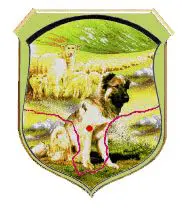 The image of the Yugoslavian Shepherd Dog Sharplanina appears on the obverse of the coin 1 Denar, issued in the Republic of Macedonia in the year 1993, and is also the emblematic protagonist of the Dragaš shield, a city in the South of Kosovo, which is located in the region of the Šar Mountains.
The image of the Yugoslavian Shepherd Dog Sharplanina appears on the obverse of the coin 1 Denar, issued in the Republic of Macedonia in the year 1993, and is also the emblematic protagonist of the Dragaš shield, a city in the South of Kosovo, which is located in the region of the Šar Mountains.
The Yugoslavian Shepherd Dog Sharplanina has reached the ranches of North America as an esteemed sheepdog and cattle guardian. Predator problems have been greatly diminished once a Yugoslavian Shepherd Dog Sharplanina , takes the responsibility of a herd. You are one of the few dogs that can chase away a wolf or bear.
Physical characteristics
The Yugoslavian Shepherd Dog Sharplanina, is a large size dog, It is quite above average when it comes to large breeds. It is also robust and equipped with a strong Constitution.
The height males average is of 56 to 62 cm and females is of 54 to 58 cm.. The length of the body is slightly greater than the height at the withers.
Although some authors speak of the existence of individuals whose actions were between 75 and 85 cm. of height and a weight of 65 to 100 kg.
– The huge head is proportional to the body, It has the skull slightly convex and slightly longer than the muzzle.
– The eyes of the Yugoslavian Shepherd Dog Sharplanina they are almond-shaped and chestnut-colored (light or dark), transmit an expression of serenity but the look is penetrating.
– The ears they are medium-sized, flat and hang on the cheeks.
– The tail It is long and Sabre-shaped, if it is in a state of alert, it carries it high, barely exceeding the line of the back.
– The fur It is long in some parts of the body and short in others. In the head, the ears and the anterior part of the extremities, is short. The length of the neck, the body and the back of the limbs and tail, is long.
– Regard to the the fur color, all uniform colors are supported but it is preferable to be gray iron and gray very dark. As well, at the top of the head, the neck and the trunk have darker hair.
Character and skills
The Yugoslavian Shepherd Dog Sharplanina it is silent, active and very protective, extremely bright, but very independent. It is an extremely good watchdog, and very reserved with strangers. The Yugoslavian Shepherd Dog Sharplanina they are calm sheepdogs, very smart, which is why, wisely, they choose their friends, trust no one too fast. They are naturally fearless defenders of the pack, as well as his master and his property, so everything he considers his property is jealously and unconditionally guarded. This is a dog with character and very dominant that requires work.. If we just want this dog to be a companion, constant professional education from an early age is essential.
The animals that live with him on the farm will be under his protection and there is no need to fear for them.. But, does not tolerate strange and unknown animals, often aggressive, and the same problems can happen with smaller pets, that can be seen as prey.
She will get along well with the children she will be together with from an early age, will be devoted and protective of them, and you may consider children you don't know as uninvited guests, so we must be very careful. You must be especially careful with younger children, since he will watch over them all the time due to the shepherd's instinct, but if the children want to get away, will drag them back, so you can injure them without realizing it.
Observations
Similar to the Caucasian Shepherd Dog –that is very much– has a temperament more characteristic of a guard dog than a herd dog.
Let us not forget that this agility, He was selected to defend the herds of the attack of wolves that were previously very numerous in their homeland.
It is necessary that the owner of this dog is a person responsible and very conscious of the copy that is in charge of, the Yugoslavian Shepherd Dog Sharplanina, It has a specially developed and powerful teeth, It can be a real danger if the dog is not given a correct and healthy education.
Education “Yugoslavian Shepherd Dog Sharplanina”
This is not a suitable dog for beginners. He is very suspicious and incorruptible. Usually, is completely loyal to a single owner. Education must be clear, consistent and should be carried out from the first meeting with the puppy. Early socialization is mandatory. With an inadequate education, this dog can become uncontrollable, very aggressive, dangerous even to the owner.
Required activity
These dogs really need a lot of exercise. If the dog goes to work on a farm, will meet your daily career needs while working, otherwise, need a longer walk or daily run.
Suitable environment
This is a dog suitable exclusively for outdoor life. You will feel better on a farm or in a larger rural fenced yard because you will be able to run freely and perform your primary role as a sheepdog..
Care “Yugoslavian Shepherd Dog Sharplanina”
Your care is not too demanding. Thick hair just needs brushing once in a while, once a week will be enough, except when you change your coat that more frequent brushing is recommended. As with other dogs, this breed also needs to clean their ears, eyes and shorten their claws.
Health “Yugoslavian Shepherd Dog Sharplanina”
No known genetic health problems, it is considered a relatively healthy breed. As with other large breeds, hip dysplasia can occur in this breed.
Images “Yugoslavian Shepherd Dog Sharplanina”
Videos “Yugoslavian Shepherd Dog Sharplanina”
Type and recognitions:
- FCI CLASSIFICATION:
- Group :
- Section : . .
Federations:
- – FCI – Pinscher and Schnauzer-Molossoid type dogs – Swiss Mountain Dogs and Cattledogs. Section 2.2 Molossoid, mountain type. ⓘ
- – CKC – Miscellaneous list ⓘ
- – UKC – Watchdog ⓘ
FCI breed standard "Yugoslavian Shepherd Dog Sharplanina"
Alternative names:
1. Illyrian Shepherd Dog, Šarplaninac (English).
2. berger yougoslave, charplanina, charplaninatz berger albanais, sarplaninac (French).
3. Šarplaninac, Jugoslovenski Ovčarski Pas – Šarplaninac, Jugoslawischer Hirtenhund – Šarplaninac, Illyrischer Schäferhund (German).
4. Šarplaninac, Charplaninatz, Sarplaninac (Portuguese).
5. Charplaninatz, Perro ovejero ilirio, Perro pastor ilirio, Perro montañés de Serbia, Perro pastor de Serbia, Perro montañés macedonio, Perro pastor macedonio, Šar Planinac (o Šar Planinec), Perro pastor yugoslavo, Perro montañés yugoslavo (español).
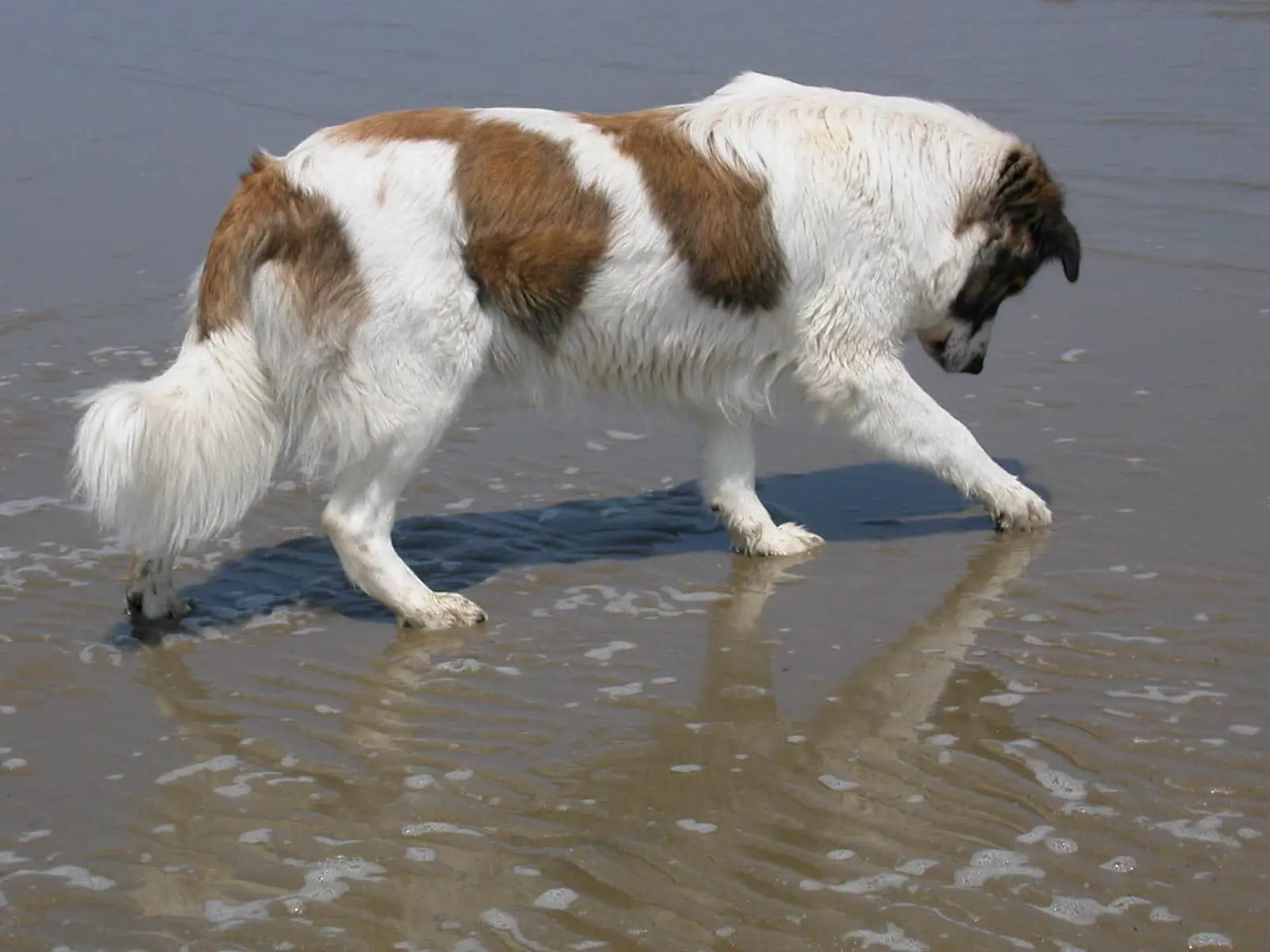
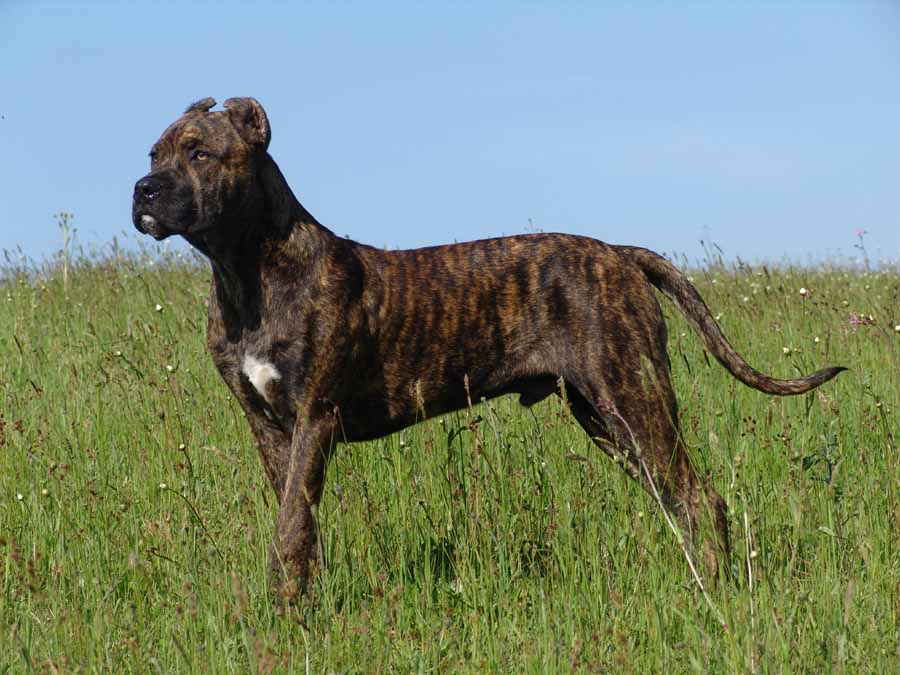
 The Alano-Spanish
The Alano-Spanish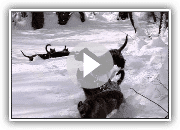 Alano-Spanish of Darkness
Alano-Spanish of Darkness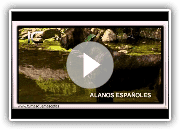 Alans
Alans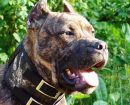
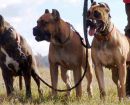
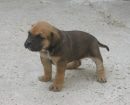
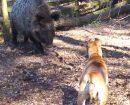
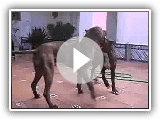 Alano-Spanish
Alano-Spanish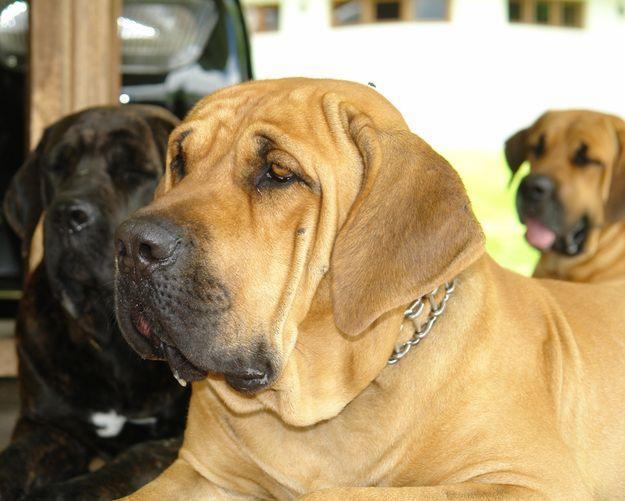
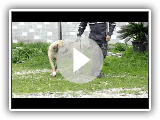

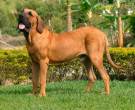

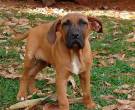
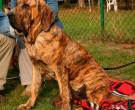


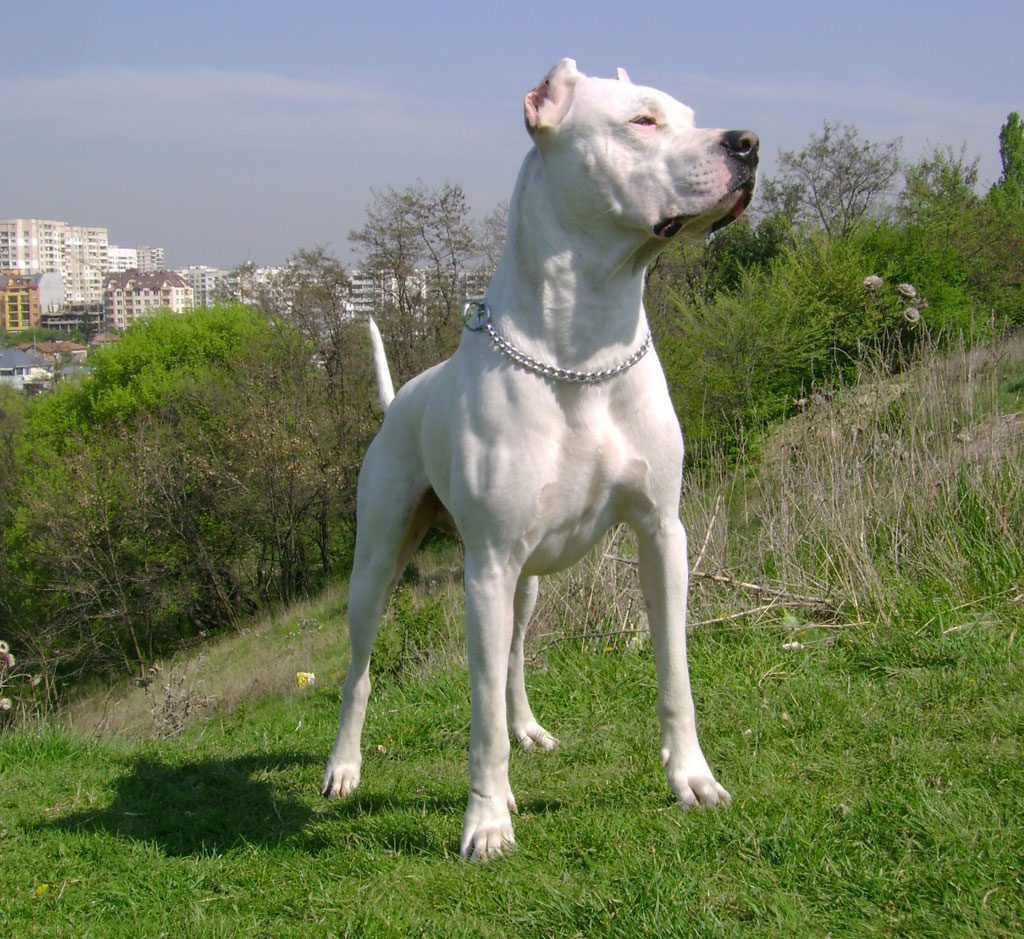
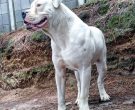
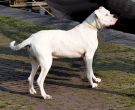
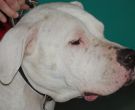
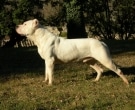
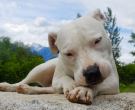
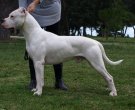
 Dogo Argentino – Characteristics and training
Dogo Argentino – Characteristics and training The Dogo Argentino dog
The Dogo Argentino dog Dogo Argentino Best Moments 2019
Dogo Argentino Best Moments 2019 Dogo Argentino playing
Dogo Argentino playing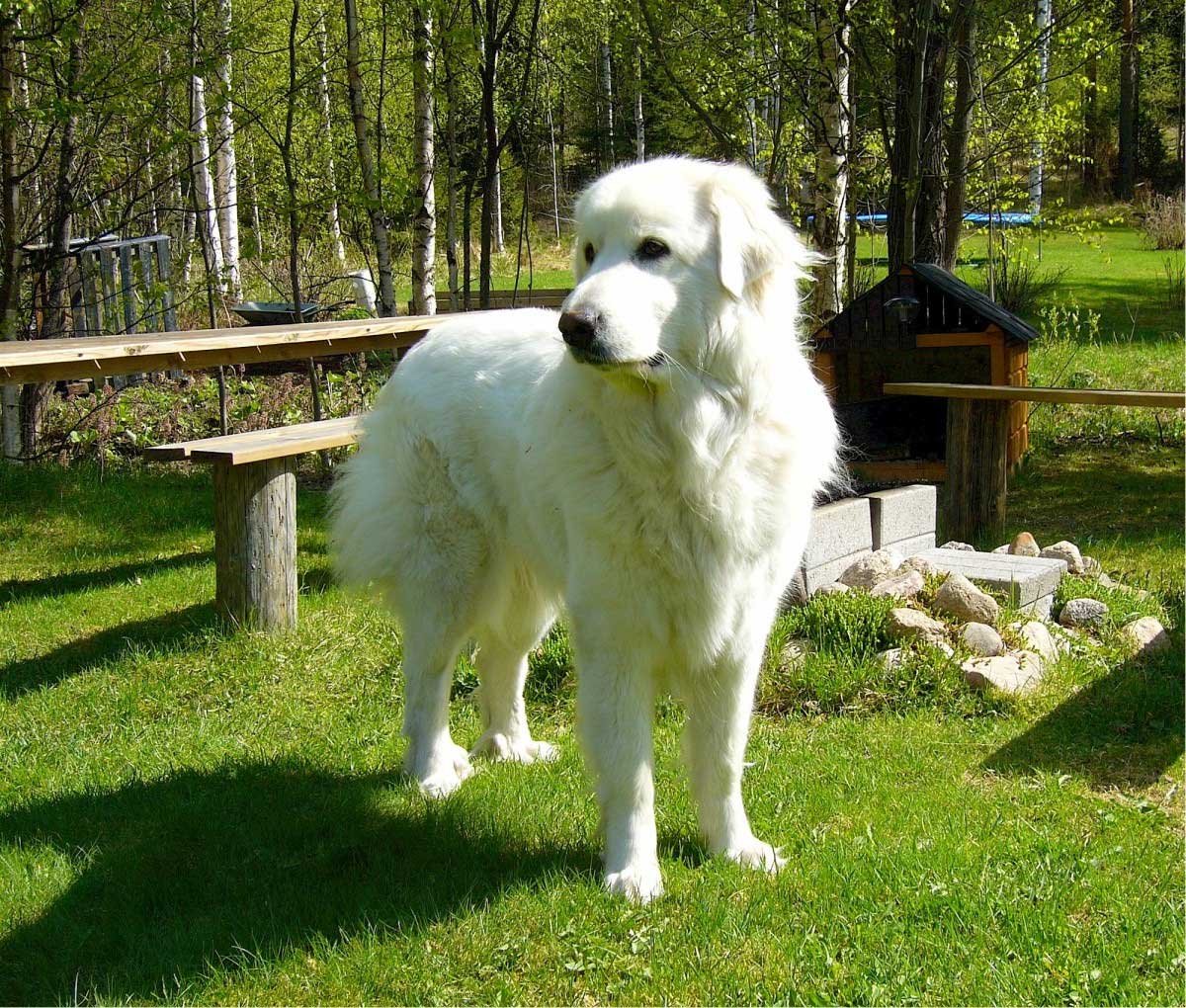
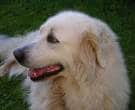
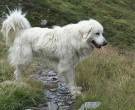

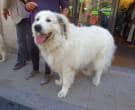
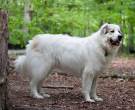
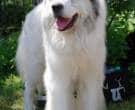
 Elevage de Patous, pyrenean mountain dogs
Elevage de Patous, pyrenean mountain dogs PYRENEAN MOUNTAIN DOG – THE BORDA OF URTX
PYRENEAN MOUNTAIN DOG – THE BORDA OF URTX Fall in love with the Giant of the Pyrenees, a really big dog
Fall in love with the Giant of the Pyrenees, a really big dog THE PYRENEAN MOUNTAIN DOG – DANGEROUS OR PROTECTOR? – Great Pyrenees
THE PYRENEAN MOUNTAIN DOG – DANGEROUS OR PROTECTOR? – Great Pyrenees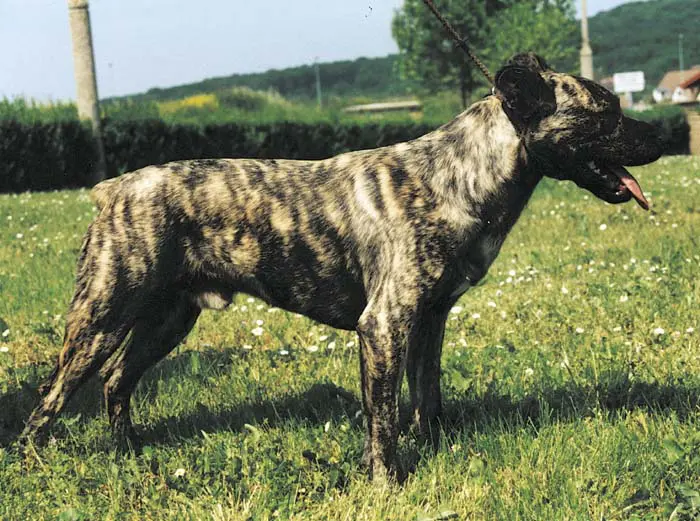
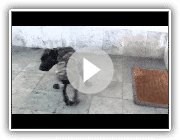
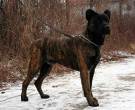
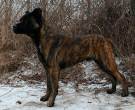
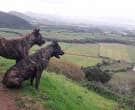
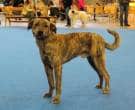
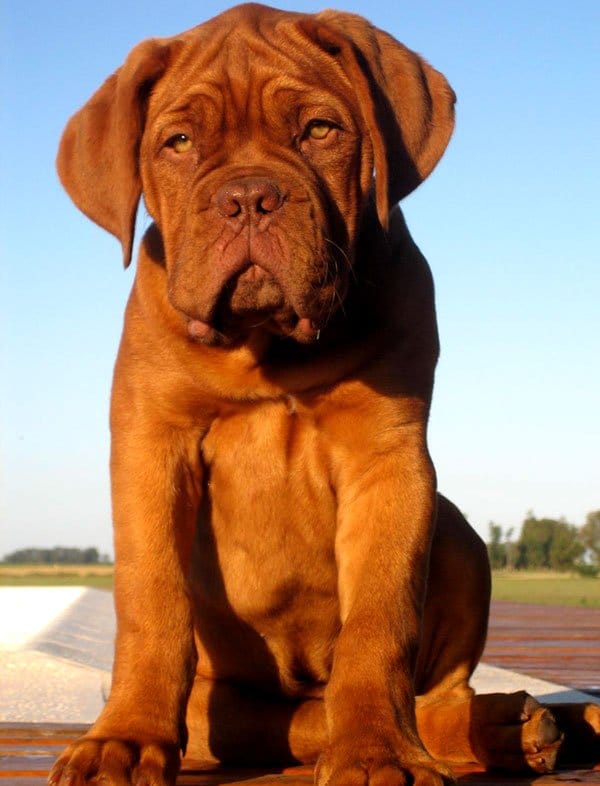
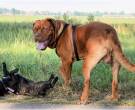
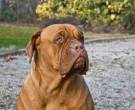
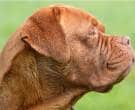
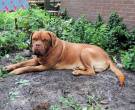
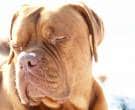
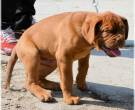
 Dogue de Bordeaux – Characteristics and training
Dogue de Bordeaux – Characteristics and training Dogue de Bordeaux
Dogue de Bordeaux THE BORDEAUX BULLDOG
THE BORDEAUX BULLDOG DOGUE DE BORDEAUX
DOGUE DE BORDEAUX DOG OF BORDEAUX: A DOG LOVER’S INTRODUCTION
DOG OF BORDEAUX: A DOG LOVER’S INTRODUCTION Mastiff of Bordeaux – Characteristics and Training
Mastiff of Bordeaux – Characteristics and Training DOGUE DE BORDEAUX FIVE THINGS YOU SHOULD KNOW
DOGUE DE BORDEAUX FIVE THINGS YOU SHOULD KNOW ALL ABOUT THE DOGUE DE BORDEAUX: THE FRENCH MASTIFF
ALL ABOUT THE DOGUE DE BORDEAUX: THE FRENCH MASTIFF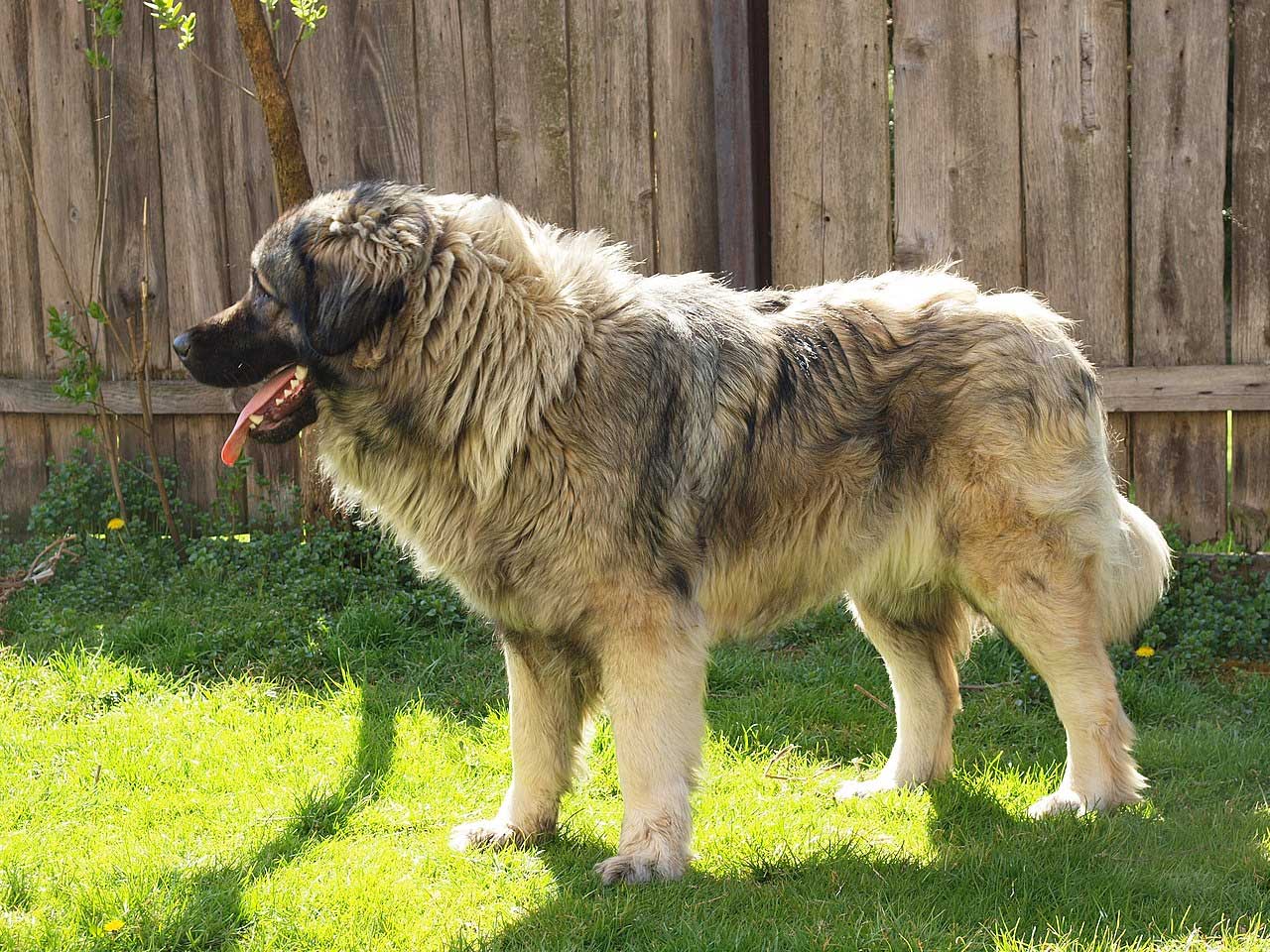

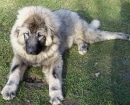
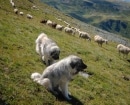

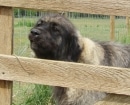

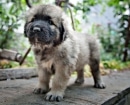
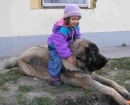
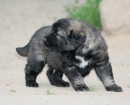


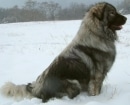
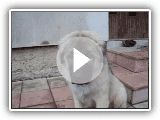 Sharplaninac
Sharplaninac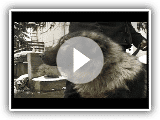 Sarplaninac puppies :: www.sarplaninac-kennel.tk
Sarplaninac puppies :: www.sarplaninac-kennel.tk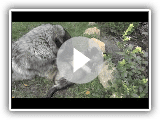 SARPLANINAC – PUPPIES 7 WEEKS OLD.m2ts
SARPLANINAC – PUPPIES 7 WEEKS OLD.m2ts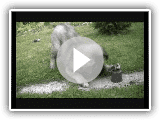 Sharplaninac puppies.
Sharplaninac puppies.